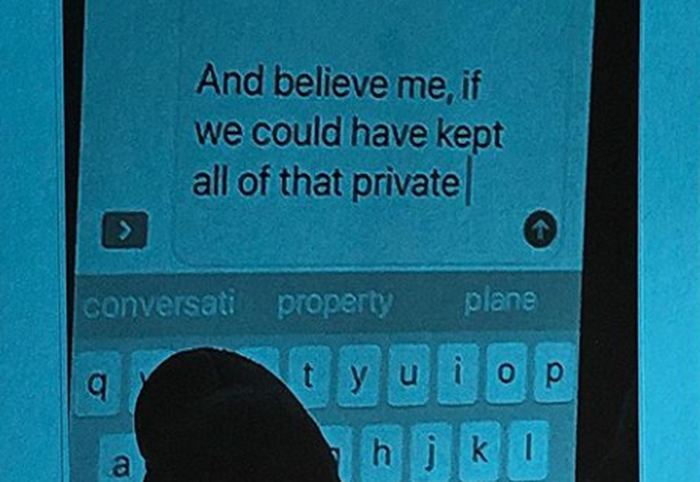Vern Blosum and the art of paradox
Piper Whitehead explores the paradoxes created by the very real art of the very fake ‘Vern Blosum’ in her first column for the arts section this term
My favourite paradox is in the Museum of Modern Art. It’s a painting of a parking meter above the words "TIME EXPIRED". It was painted in 1962 by Vern Blosum, who is generally not a real person and specifically not a real artist. "TIME EXPIRED" was the work of an abstractionist, who was one day so annoyed by upstart pop artists like Andy Warhol that he painted over forty images of everyday objects captioned with varying degrees of sense. Some are funny, some, like TIME EXPIRED, seem to carry some kind of existential weight, and others are frankly inexplicable, such as a pigeon captioned "PLANNED OBSOLESCENCE". Essentially, the artist critiqued Pop Art by himself becoming a pretty successful Pop artist, which is sort of like protesting graffiti by tagging your own wall and then achieving critical recognition as Banksy. It’s not the world’s clearest statement of intent; in fact, it’s something of a paradox. And here’s another: I would say Vern Blosum is dead, but Vern Blosum never lived. However, the person who painted Time Expired is now dead. There’s another example of how something can be a paradox even though we know it’s true.
“Lots of people who know about Pop Art would say that it’s impossible to parody, because it’s already a parody of itself.”
I found all this out later when I googled the painting, because the art gallery label didn’t say much at all. There’s nothing more annoying than a painting that’s considered important enough to be in a gallery, but not important enough for the gallery to have written anything about it. Something about the absence of an explanation in this case seems more sheepish than anything else. When the director of MoMA, a man called Alfred H. Barr, bought a Vern Blosum painting, he purchased a hoax. You can buy a hoax, but only if people believe you’re in on the joke (a notable example – the work of the famous forger Han van Meegeren became so expensive after his trial that other artists began to forge his forgeries). I don’t know how much the director of MoMA paid for their Vern Blosum, but it probably wasn’t a humorous amount. Still, the director liked the painting, and so did I when I walked past it several years ago.
Vern Blosum’s real identity is another small paradox: a secret that plenty of people know. Those who do have knowledge of Blosum, beyond the scant and at least partially erroneous biographical information he provided to the world, have kept it to themselves out of respect for his wishes. Despite this, journalists Greg Allen and William E. Jones have revealed that, while Blosum may not be a ‘real’ artist, the person who painted the works was an artist in their own right, and under their own name. While Blosum never achieved the popularity of someone like Warhol or Roy Lichtenstein, it’s quite possible that the artist is more famous for a series of disgruntled hoaxes than the art he was passionate about. The implications of this are broader than one person’s artistic success or failure.
Artists or collectives working under assumed identities aren’t uncommon today, like the aforementioned Banksy, or the activist group Guerilla Girls. However, their success is often due to a realness or a truth which we perceive in their works, something they arguably couldn’t achieve if they revealed their true identities. On the other hand, artists that do use their real names are constantly accused of bad-faith art –usually cash-grabbing insincerity (Damien Hirst and Jeff Koons spring to mind), their work collecting the dreaded label of ‘Not Real Art’. Blosum does not easily fit into either of these camps. Then there’s Marcel Duchamp, a spiritual father of Pop Art, who from the 1910s humorously exhibited a urinal, a snow shovel, and a bottle rack. His actions prefigured the elevation of ‘low’ culture to high, the use of comics, advertisements, and everyday objects which characterises Pop Art. Duchamp certainly took his own work seriously, but many would consider what he did to have broken the whole concept of art. Now, Blosum warns us, anyone can exhibit anything.
Lots of people who know about Pop Art would say that it’s impossible to parody, because it’s already a parody of itself. They would argue that Blosum missed the point, especially as time goes by, and more and more people walk past Blosum paintings and don’t see them as anything different from the rest of the art surrounding them; just more Pop Art by a relatively obscure artist, identified by title, date, artist, medium, dimensions, etc. I feel that what happened to Blosum just fulfilled the parody. Object is conflated with Art, the imitator makes Art of the conflation, parody is then conflated with Art and itself becomes an Art Object. (And finally, student of Art History writes about the Art Object). More recent exhibits of the work of Vern Blosum are likely to be tongue in cheek participants of the hoax. The question is whether Blosum is in on the joke anymore.
 Features / How sweet is the en-suite deal?13 January 2026
Features / How sweet is the en-suite deal?13 January 2026 Comment / Will the town and gown divide ever truly be resolved?12 January 2026
Comment / Will the town and gown divide ever truly be resolved?12 January 2026 News / 20 vet organisations sign letter backing Cam vet course13 January 2026
News / 20 vet organisations sign letter backing Cam vet course13 January 2026 Arts / Fact-checking R.F. Kuang’s Katabasis13 January 2026
Arts / Fact-checking R.F. Kuang’s Katabasis13 January 2026 Music / Inside Radiohead’s circle13 January 2026
Music / Inside Radiohead’s circle13 January 2026










